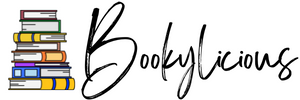Thrills Run Up and Down My Spine
Peter Taylor reflects on a bookish issue from the unusual perspective of a designer
(With apologies to Ira Gershwin)
I enjoyed Paul Jeorrett’s piece about book spines. As a designer, I look at them from a different point of view. I notice that on my own bookshelves the spines of older books, such as Penguins of the 1950s, have titles reading upwards from bottom to top, whereas most of the newer ones read downwards. Why did this change of direction happen?
When I studied typography many years ago, the received wisdom was that upward-reading titles were easier to read. This had something to do with reading from left to right, though I don’t think it has ever been proved scientifically. We were told, however, that the increasing popularity of coffee-table books now favoured the opposite direction. The lettering on the spine should be the right way up when the book is laid flat.
That all made perfect sense until I noticed that books in German, Russian, French and most other European languages all have titles reading upwards. Don’t they have coffee tables in those countries? The real explanation must lie elsewhere.
Spines did not carry titles at all until the 16th century. Before that, books were usually stored with the cut pages facing outwards and the spines hidden. The first spine titles ran horizontally, because most books were fat enough to accommodate long words. On thinner books the spine was left blank, but this made them difficult to find as libraries grew bigger. Booksellers also needed to promote their wares, so by the 19th century most spines carried titles of some sort.
Two different traditions seem to have arisen independently: upward-reading spines in Europe, and downward-reading in America, with no good reason except local custom. Britain followed the European tradition until the mid-20th century, then gradually moved to the American model. The changeover was largely complete by the 1970s, and may relate to legal changes which enabled British books to be sold in the USA and vice versa.
Books published on the continent continue to have upward-reading spines. Their publishers would say that if a book is laid flat, you can see the title on the front anyway. It therefore matters little if the lettering on the spine is upside down. A rare exception was seen in Russia in 2003, when the government tried to impose downward-reading spines by law, but this decree seems to have been largely ignored.
There is no simple answer to this. In some countries they do it one way, in others they do the opposite. This is rather like driving on the left or the right. In that case there are several possible explanations, like Roman soldiers needing to keep their sword arms free, or Napoleon being left-handed. Whichever explanation you prefer, it fails to explain why half the world does it the other way. It is one of life’s unsolved mysteries, like the lettering on the spine of a book.
© Peter Taylor 2018
